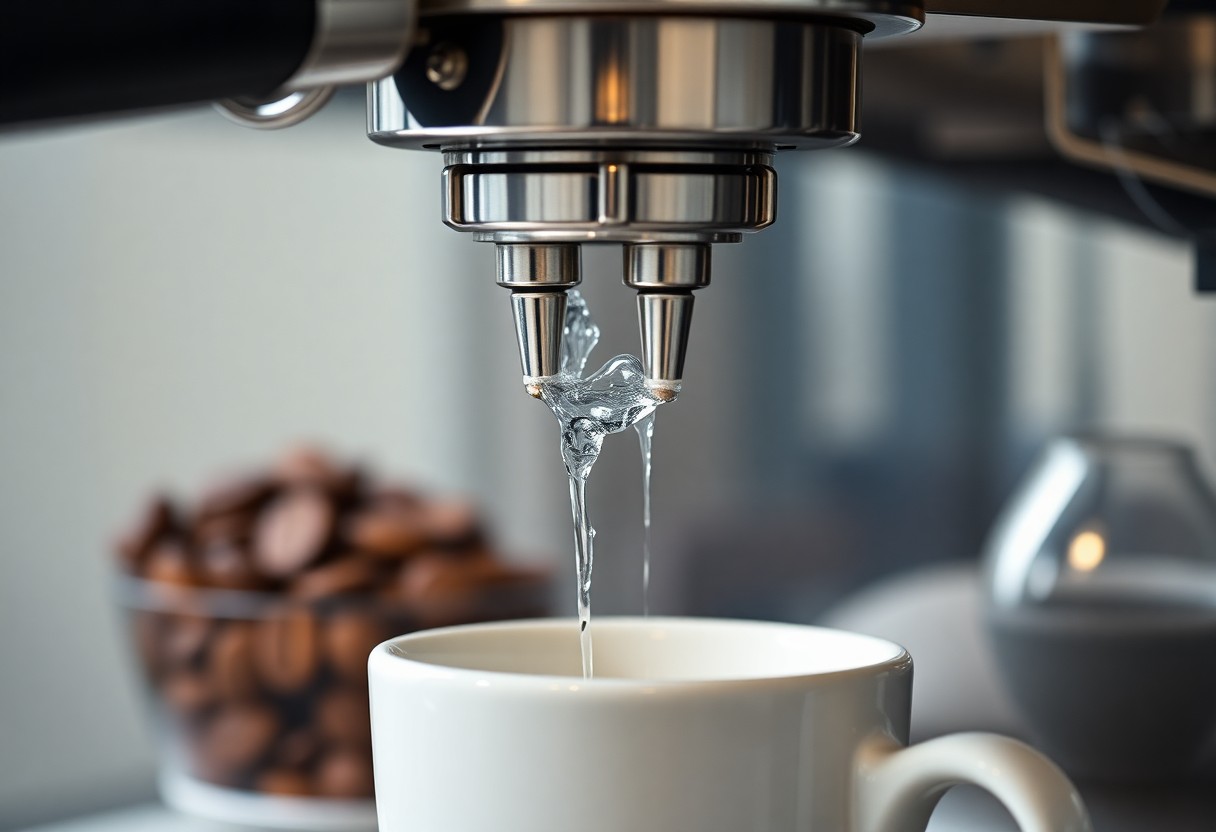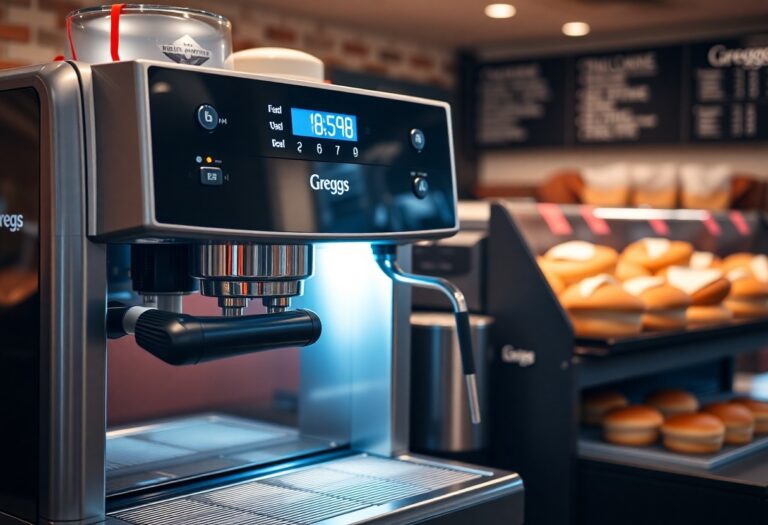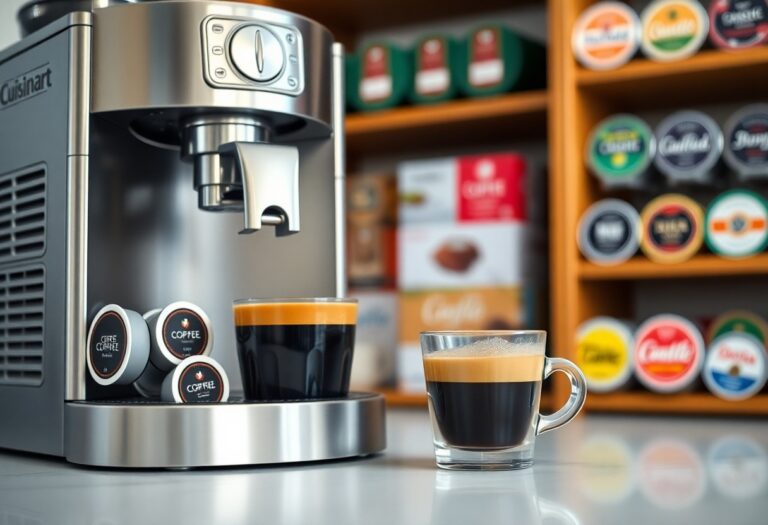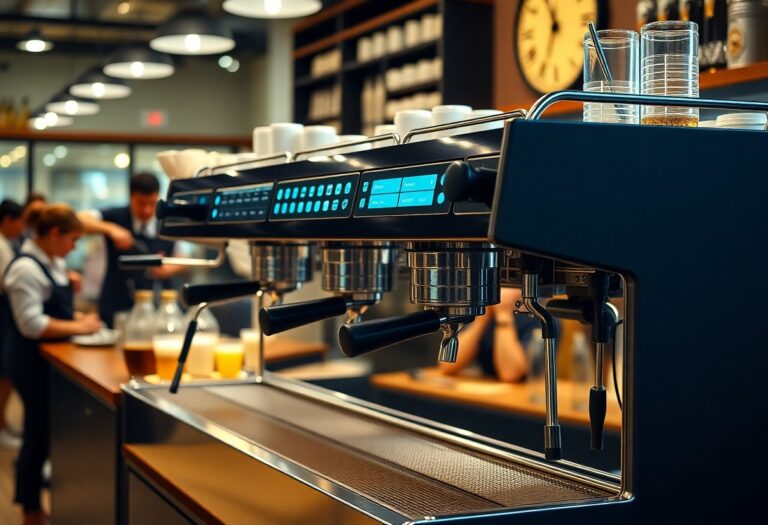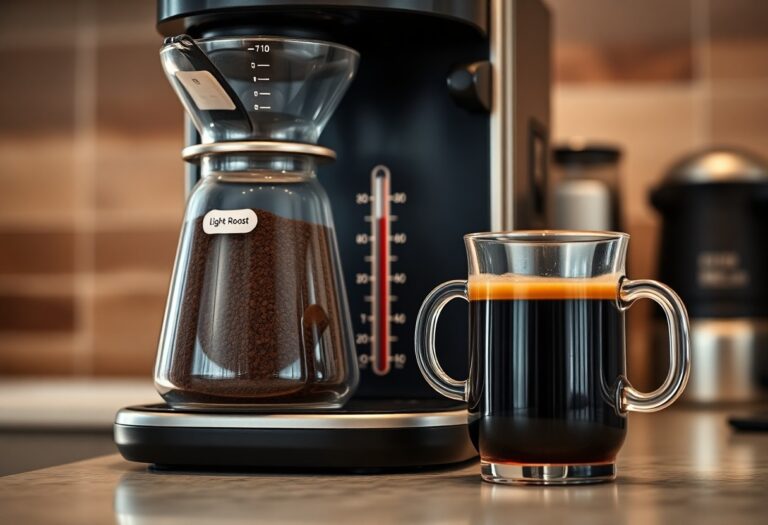What is a Water Spout in a Coffee Machine – Dispensing Component
You might be surprised to learn that the water spout in your coffee machine is an important component that plays a key role in brewing your favorite beverage. This dispensing component delivers hot water precisely where it’s needed, ensuring optimal extraction of flavors from your coffee grounds. If you’re experiencing issues or need to understand its function better, you can find more details on the Wolf EC24 Coffee System Shows Insert Water Spout. Having a fully operational water spout can dramatically enhance your coffee experience.
Key Takeaways:
- A water spout is the component of a coffee machine responsible for dispensing hot water used for brewing coffee.
- It is typically located on the front of the machine and allows for easy access when preparing coffee.
- Water spouts may vary in design, with some models featuring adjustable heights for different cup sizes.
- Some advanced coffee machines include programmable features that can control the water temperature and flow rate during dispensing.
- Regular cleaning and maintenance of the water spout are important to prevent clogs and ensure consistent water flow.
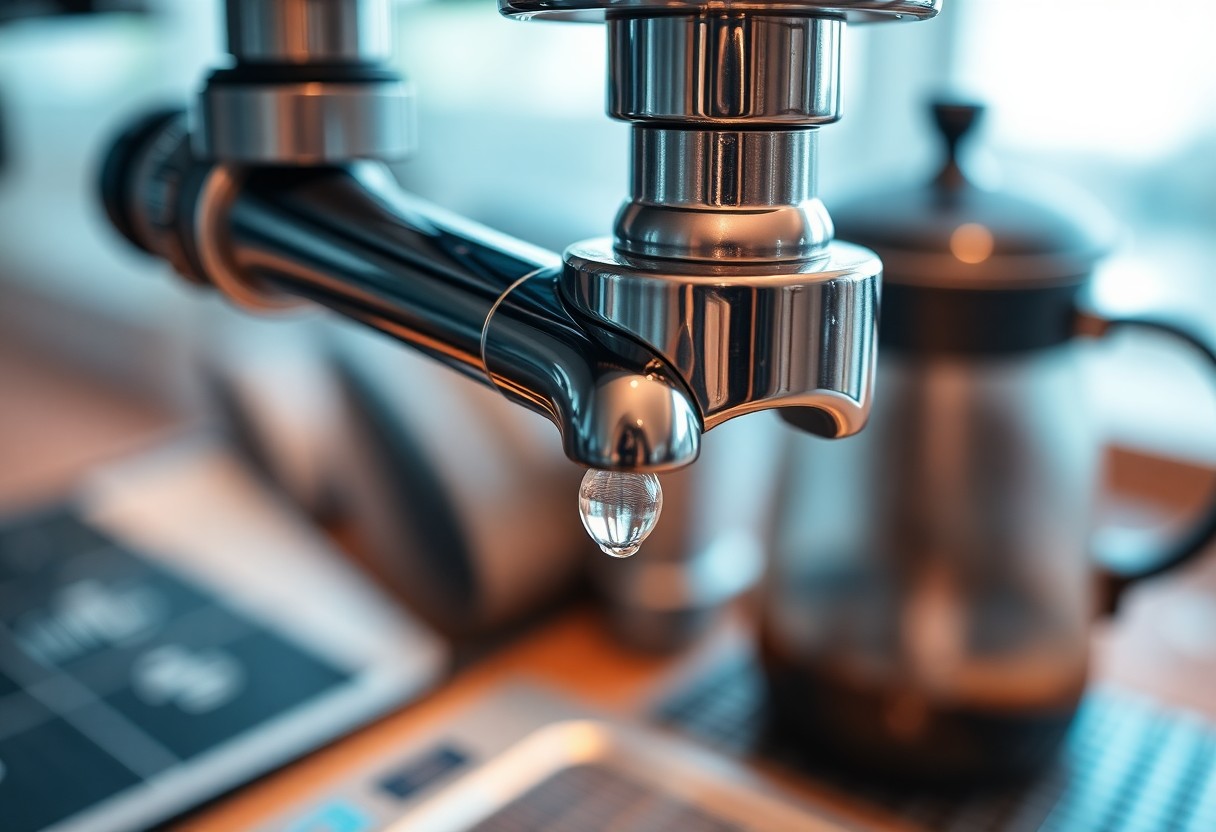
Anatomy of a Coffee Machine: The Role of the Water Spout
The water spout is an integral part of your coffee machine, designed to deliver hot water precisely and efficiently to the coffee grounds. It typically sits above the brew basket and is engineered to ensure that water disperses evenly, maximizing extraction for a rich and flavorful cup of coffee. By directing hot water onto the coffee grounds, the water spout plays a pivotal role in initiating the brewing process, influencing everything from flavor profile to overall brew strength.
Key Components of the Water Dispensing System
Several key components work together within the water dispensing system. The pump draws water from the reservoir, while the heating element ensures that the water reaches the optimal brewing temperature. The plumbing connects these elements to the water spout, where the water is ultimately dispensed. Each component must function effectively to guarantee not just functionality, but a superior coffee experience. A malfunction in any single part can lead to uneven brewing and subpar flavor.
The Connection Between the Water Spout and Brewing Process
The water spout’s design and functionality directly impact how water interacts with coffee grounds during brewing. Its shape and positioning determine the direction and distribution of hot water, ultimately affecting extraction rates and flavor profiles. You want to ensure that the water saturates the coffee evenly, avoiding over-extraction or under-extraction that can compromise the taste. A well-calibrated spout contributes to an even brew, extracting oils and compounds optimally for a satisfying cup.
In practice, the connection between the water spout and the brewing process means that you can achieve a more consistent taste in your coffee. For example, consider a drip coffee maker where the water spout releases water in a steady stream over a broad area of the basket. This even cascading action allows for optimal flavor extraction while preventing clumping of the grounds that could lead to bitter notes. Fine-tuning this connection can be the difference between an average cup of coffee and one that delights your palate.
The Mechanics of Water Dispensing: How It Works
The water dispensing mechanism of a coffee machine relies on precise engineering to ensure a perfect brew. Upon selecting your desired coffee type, the machine activates a series of components that heat and transport water from the reservoir to the brewing chamber. A combination of pumps and valves regulates flow, while temperature sensors confirm that water reaches the optimal heat before it meets the coffee grounds, unlocking their flavor and aroma.
The Flow Path: From Reservoir to Cup
Water travels through a carefully designed flow path that starts from the reservoir, moves through heating elements, and finally reaches the coffee grounds in the brewing chamber. The journey doesn’t stop there; brewed coffee then flows into the carafe or cup. Each diversion in this pathway is meticulously crafted to prevent leaks and ensure that you receive hot, delicious coffee without interruption.
Pressure and Temperature: Optimal Conditions for Extraction
Pressure and temperature are vital for coffee extraction. Typically, you need temperatures between 195°F to 205°F (90°C to 96°C) and pressure around 9 bar during the brewing process. These conditions help dissolve oils and flavors, creating a well-balanced cup. If the pressure drops or the temperature isn’t right, bitterness or sourness can dominate your coffee, ruining the whole experience.
Pressure and Temperature: Key Parameters
| Temperature Range | 195°F to 205°F (90°C to 96°C) |
| Optimal Pressure | 9 bar |
Understanding these parameters is important for crafting that perfect cup. Insufficient temperature might lead to under-extraction, leaving your coffee tasting weak and unappealing. Conversely, too high a temperature can scald the grounds, resulting in a bitter, unpalatable brew. Ideal pressure ensures that water flows evenly through your coffee grounds, maximizing flavor extraction while minimizing unwanted acidity or bitterness.
Extracting Flavor: The Significance of Proper Conditions
| Under-Extraction | Weak, watery flavor |
| Over-Extraction | Bitter, unpleasant taste |
Enhancing Your Brew: Adjustments and Maintenance
Fine-tuning your water spout can greatly enhance your brewing experience. Adjustments to water temperature and flow rate can impact the extraction process, allowing you to dial in the perfect balance for your favorite coffee beans. Regular maintenance ensures consistent performance, prolonging the life of your coffee machine while guaranteeing that every cup of coffee meets your standards. Knowing how to keep this vital component running smoothly will lead to a more enjoyable and reliable coffee routine.
Common Issues Affecting Water Dispensing
Facing issues with water dispensing can disrupt your daily coffee ritual. Common problems include clogs in the water spout, which can hinder water flow, and faulty connections resulting in leaks or inconsistent pressure. These issues often arise from mineral buildup or infrequent cleaning, leading to diminished performance and quality in your brews.
Routine Maintenance Practices for Longevity
Implementing routine maintenance practices, such as regular descaling and thorough cleaning, can significantly extend the lifespan of your water spout. Deep cleaning every few months helps eliminate mineral deposits, while basic daily upkeep ensures that your machine operates at peak performance. Keeping your coffee machine in optimal condition can lead to better flavor extraction, ultimately enhancing your coffee experience.
In addition to descaling, you should also periodically check and replace the water filter as needed, usually every two to three months, depending on usage. Regularly inspecting the water spout for any signs of wear or damage is also imperative. Gently cleaning the spout after each use will prevent buildup, ensuring that your water flows smoothly when you brew. Investing a little time in these practices will yield a consistently excellent cup of coffee, ensuring your machine remains a reliable companion for years to come.
The Impact of Design Choices on Coffee Flavor
Your coffee’s flavor isn’t just an outcome of the beans and water; design choices in your coffee machine’s water spout also play a significant role. The materials, shape, and angle of the spout affect how water interacts with the coffee grounds, impacting extraction rates and, ultimately, taste. A well-designed spout can enhance the brewing process, ensuring balanced and rich flavors, while poor choices can lead to lackluster results.
Material Matters: Plastic vs. Metal Spouts
The choice of material for your water spout can dramatically influence the coffee’s brewing quality. Plastic spouts may lead to flavor leaching, altering the taste profile due to the potential for heat retention and chemical release. Metal spouts, particularly stainless steel, provide a more neutral interaction, enhancing flavor consistency by withstanding high temperatures. Hence, investing in a coffee machine with a high-quality metal spout could yield a purer and tastier brew.
Spout Shape and Angle: Influences on Extraction Quality
Spout shape and angle directly affect how water flows over the coffee grounds, altering extraction efficiency. A slanted or tapered spout can help guide water more evenly, ensuring optimal saturation and uniform extraction of flavors during brewing. Different designs can influence the velocity of water as it exits the spout, prompting different interaction levels with the grounds. Therefore, the right spout design can lead to a fuller-bodied coffee experience, enhancing your overall enjoyment.
When evaluating your coffee machine’s spout design, consider how water delivery affects flavor extraction. A wider spout may promote rapid water flow, potentially leading to under-extraction, while a narrow, angled spout can facilitate a more controlled, consistent pour. The shape’s aerodynamics can create a better spray pattern, encouraging even wetting of the coffee bed, crucial for balanced flavor profiles. In essence, a thoughtfully designed spout enhances not only extraction but also builds toward that perfect cup you strive for with each brew.
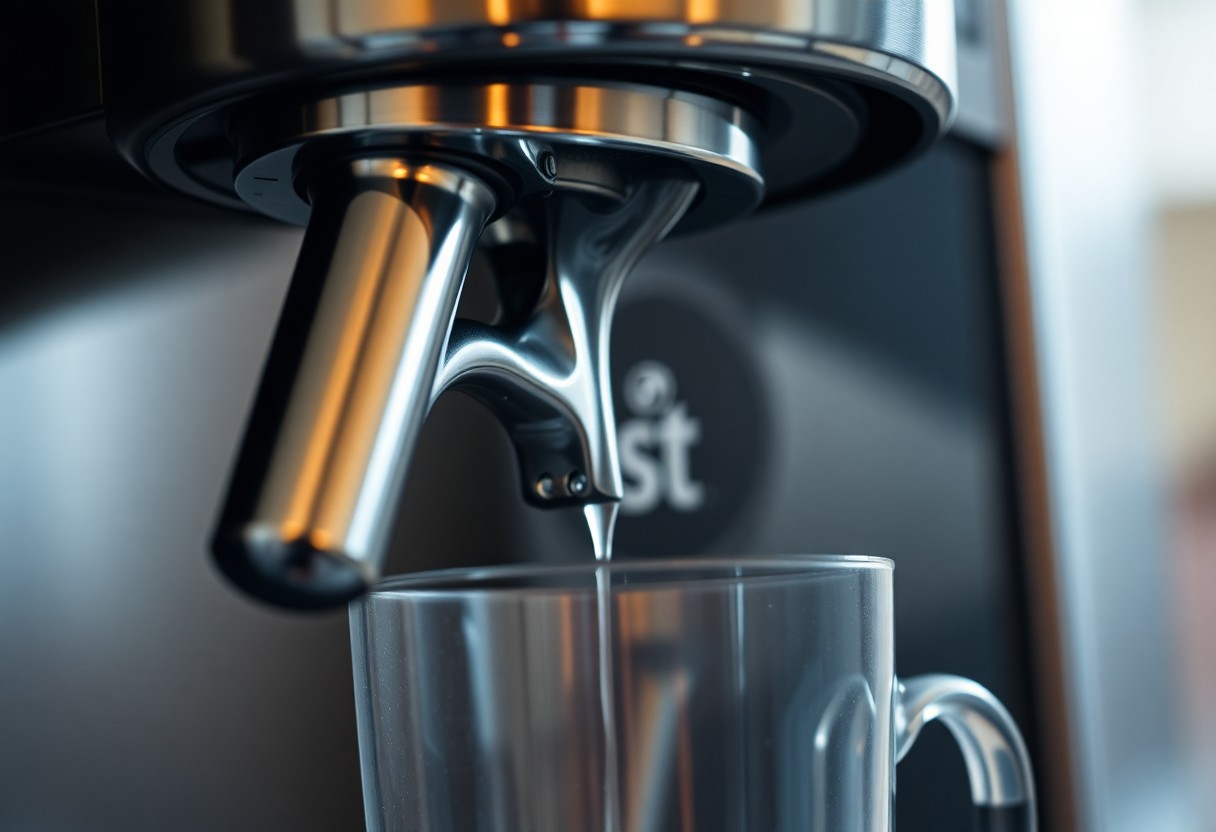
Real-World Applications: Choosing the Right Coffee Machine
When identifying a coffee machine, understanding the type of water spout integrated into your choice can significantly influence your brewing experience. A machine well-matched to your daily routine can enhance not only flavor and consistency but also convenience. Whether for home use or commercial applications, the right coffee machine speaks to your preferences, ensuring the water delivery system works seamlessly with your brewing method and desired coffee type.
Assessing Your Brewing Needs
Begin by evaluating how you typically brew coffee—do you prefer espresso, drip, or pour-over? Each method has unique requirements for water temperature and flow rate, which can be controlled by the water spout. Additionally, think about your frequency of use; a machine designed for heavy daily use will have different specifications and durability compared to one meant for occasional brewing.
The Importance of Water Spout Quality in Commercial vs. Home Machines
In commercial environments, the water spout must deliver consistent performance under intense demand, emphasizing durability and efficiency. Contrast this with home machines, where focus might lean towards more versatile features or aesthetics. The variability in water temperature, pressure, and distribution can drastically affect drink quality. A high-performance spout in a café will ensure each espresso shot is extracted precisely, while a well-designed spout in a home machine can deliver just enough variation to suit your personal taste preferences without sacrificing quality.
To wrap up
Conclusively, understanding the water spout in your coffee machine’s dispensing component is imperative for optimal performance. This key feature directs hot water to your coffee grounds, significantly impacting extraction quality and, ultimately, your coffee’s flavor. By keeping the water spout clean and ensuring it functions correctly, you can enhance your coffee brewing experience. Investing time in learning how this component works not only improves your daily coffee ritual but also prolongs the longevity of your machine.
FAQ
Q: What is a water spout in a coffee machine?
A: A water spout in a coffee machine is a component designed to dispense hot water or coffee during the brewing process. It typically directs the flow of hot water from the boiler or heater to the coffee grounds or directly into the cup, ensuring optimal extraction and flavor. The spout’s design is key to controlling the water flow and ensuring it mixes well with the coffee grounds for the best brewing results.
Q: How does the water spout impact the coffee brewing process?
A: The water spout plays an vital role in the coffee brewing process as it affects how water interacts with the coffee grounds. A well-engineered spout facilitates an even distribution of water over the grounds, which promotes consistent extraction of flavors and oils. Poor water flow can lead to uneven extraction, impacting the taste and quality of the brewed coffee.
Q: Are water spouts adjustable in coffee machines?
A: Many modern coffee machines come with adjustable water spouts that allow users to customize the height and direction of the water flow. This feature is beneficial for accommodating different cup sizes or brewing methods. Some machines may also allow users to adjust the water temperature or flow rate for an optimized brewing experience based on personal preferences.
Q: What materials are typically used in water spout construction?
A: Water spouts are generally constructed from durable materials that can withstand high temperatures, such as stainless steel or high-grade plastic. Stainless steel is favored for its ability to resist corrosion and maintain heat, while high-grade plastic may provide lightweight options. Both materials ensure safety and longevity in high-water-pressure environments typical in coffee machines.
Q: How should I maintain the water spout of my coffee machine?
A: To maintain the water spout of your coffee machine, it is advisable to regularly clean it to prevent mineral buildup and clogs. Use a soft cloth or brush to gently remove any coffee residue or scale buildup, particularly if your area has hard water. Additionally, follow the manufacturer’s guidelines for descaling the machine periodically, which often includes the spout, ensuring consistent performance and flavor extraction.

